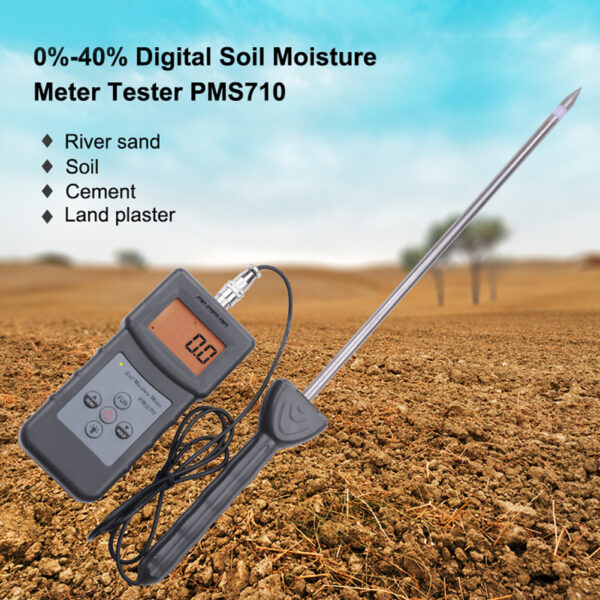Moisture Meter Purchasing Overview: What to Search for in High-Quality Instruments
Moisture Meter Purchasing Overview: What to Search for in High-Quality Instruments
Blog Article
Understanding the Importance of a Moisture Meter in Preventing Mold and Water Damage in your house
In the world of home maintenance, the visibility of wetness can commonly be a silent yet powerful opponent, with the ability of triggering pervasive mold and mildew development and perilous water damage if left unchecked. Amidst the serene atmosphere of a home, hidden wetness issues can make below the surface, posturing a danger to both residential or commercial property and wellness. Equipped with the right devices and expertise, property owners can proactively combat these potential risks. Recognizing the importance of a moisture meter in this fight is not just an option yet a critical necessity.
Value of Moisture Discovery
Efficient dampness detection approaches are essential for guarding properties and protecting against potential mold and mildew growth and water damage. Moisture can leak into various structure products, resulting in architectural concerns and wellness threats. By utilizing a wetness meter, homeowner can proactively determine areas prone to excess dampness, enabling for prompt intervention and mitigation approaches.
Moisture meters supply exact analyses of wetness levels in various products such as drywall, concrete, and wood. This data aids in determining locations of issue, even in surprise or hard-to-reach locations. Early discovery of dampness accumulation enables punctual repair services or modifications to stop more damage.

Just How Moisture Meters Work
Dampness meters play an essential function in the aggressive recognition of excess dampness, assisting in the avoidance of possible mold and mildew growth and water damages by providing accurate readings of dampness levels in numerous building products. These gadgets function based on various principles, relying on their type. Moisture Meter. Pin-type dampness meters, for instance, have 2 pins that pass through the product to measure the electric resistance between them. When moisture is existing, it improves the material's conductivity, resulting in a lower resistance reading. Pinless wetness meters, on the various other hand, use electro-magnetic sensors to scan the material without triggering damage. These sensing units produce electro-magnetic signals that penetrate the product and measure the dielectric residential or commercial properties, showing wetness web content. Some advanced moisture meters pin both integrate and pinless modern technologies for thorough dampness discovery. Recognizing exactly how moisture meters feature is crucial for accurate and timely dampness degree evaluations, allowing effective safety nets against mold and water damage.
Finding Early Indication
Upon initial examination of a home, recognizing subtle indications click here to find out more of excess moisture comes to be essential in the very early discovery of prospective mold and mildew development and water damage. Water discolorations can indicate leaks or infiltration, while peeling off paint or wallpaper might be an outcome of dampness compromising the bond of these materials to the surface. In addition, a boost in allergic reaction signs and symptoms or respiratory system issues amongst occupants might suggest the visibility of mold and mildew due to excess dampness.
Avoiding Mold Development
Recognizing early indication of excess wetness within a residential property not only allows punctual detection of prospective mold growth and water damages yet also works as an aggressive measure in protecting against the proliferation of mold and mildew. To efficiently protect against mold growth, it is critical to attend to any kind of sources of wetness without delay. This can consist of repairing leaks in pipes, roofs, or home windows, ensuring appropriate air read here flow in moist areas like kitchens and washrooms, and using dehumidifiers in high-humidity spaces. On a regular basis checking and preserving the building's plumbing, roof, and gutters can also assist in stopping water invasion that might bring about mold and mildew growth.
Keeping track of moisture degrees in areas prone to dampness, such as basements and creep rooms, using a moisture meter can likewise aid in very early detection of raised dampness levels and potential mold development - Moisture Meter. By taking proactive actions to avoid excess dampness and mold and mildew development, home owners can safeguard their residential property and indoor air quality.
Advantages of Regular Tracking
Regular tracking of dampness levels in a home can play an essential duty in maintaining a healthy and balanced indoor setting and stopping prospective mold and mildew and water damages. By frequently examining moisture degrees, property owners can spot any type of problems quickly and take required actions to avoid mold and mildew growth and water damage.
Furthermore, normal surveillance enables house owners to track patterns and fads in wetness levels over time. Ultimately, the consistent surveillance of wetness levels empowers house owners to shield their home, guard their health, and protect the stability of their indoor environment.

Conclusion

By using a dampness meter, residential or commercial property proprietors can proactively recognize locations prone to excess wetness, allowing for prompt intervention and reduction techniques.

Monitoring moisture degrees in areas susceptible to moisture, such as basements and creep spaces, utilizing a moisture meter can likewise aid in early detection of elevated moisture degrees and possible mold development. (Moisture Meter)
Report this page